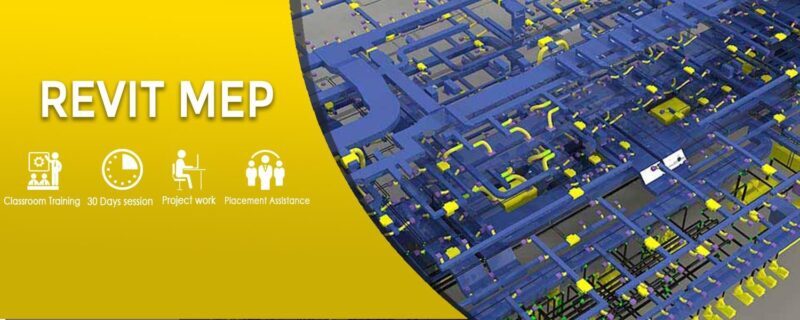- Home
- About Us
- Courses
- Software
- Services
- Resources
- Admissions
- Contact
- Blog
Autodesk Revit MEP is a building information modeling (BIM) software created by Autodesk for professionals who engage in MEP engineering. MEP stands for mechanical, electrical, and plumbing, which are the three engineering disciplines that Revit MEP addresses. By utilizing BIM as opposed to computer-aided drafting (CAD), Revit MEP is able to leverage dynamic information in intelligent models — allowing complex building systems to be accurately designed and documented in a shorter amount of time. Each intelligent model created with Revit MEP represents an entire project and is stored in a single database file. This allows changes made in one part of the model to be automatically propagated to other parts of the model, thus enhancing the workflow for Revit MEP users

Individuals who currently work in or are pursuing careers in the mechanical, electrical, or plumbing engineering fields will discover many benefits of using Revit MEP. The BIM workflow offered by Revit MEP not only maximizes productivity but also helps to streamline your design and documentation workflows; speeding projects from design to completion while automating updates across your model with a single design change. Autodesk Revit MEP offers many other tools and features that can enhance productivity such as Building Performance Analysis, Autodesk 360 Integration, Construction Documentation, Pressure and Flow Calculations, Pressure Loss Reports, Parametric Components, and much more.
Autodesk Revit MEP is used by professionals across many industries to help reduce risk, develop better quality designs, and improve project delivery. For example, a HVAC (heating, ventilation, and air conditioning) manufacturing company may use Revit MEP to develop detailed BIM-ready product models for engineering customers, which not only saves customers from having to spend hours drawing a single piece of equipment, but also increases accuracy and helps them deliver a more buildable product. In the case of an architectural firm, Revit MEP may be used to fast-track the design and construction of a military community hospital; leveraging BIM to allow everyone involved in the project to explore, visualize, and understand the outcomes of design choices from the earliest stages of the project. Ultimately, Revit MEP is used to streamline the engineering design process using a single model to enhance the communication of design intent before construction begins. This, in turn, helps stakeholders to make more informed and accurate design decisions that not only reduce the time it take to complete a project but also have a significant impact on overall building performance

Cadguru Delhi, recognized among the top ten Revit MEP training institute in Uttam Nagar Delhi, has training module for beginners, intermediates, and experts. Contact today.
